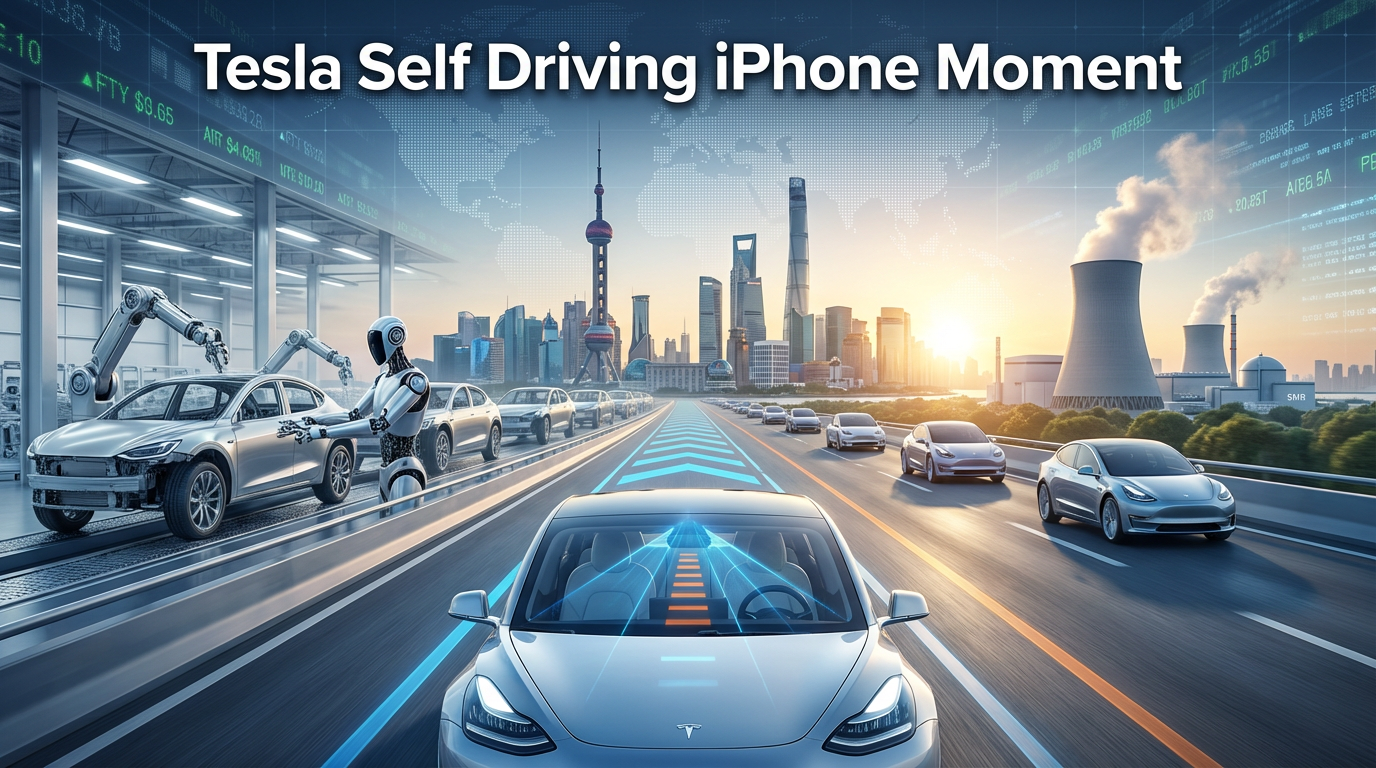*Source: https://news.aikoreacommunity.com/cathie-wood-prophecy-great-wealth-redistribution-5-tech-platforms/

● Cash Wood’s Prophecy Historic Wealth Redistribution Through the Power of 5 Innovation Platforms
Prediction by Cathie Wood: The Fusion of 5 Major Innovation Platforms Will Lead to the ‘Greatest Wealth Redistribution in History’ — What to Know and How to Prepare
The key points you will gain from this article are as follows:
Mechanisms on how the 5 innovation platforms (Robotics, Energy Storage, AI, Blockchain, Multi-omics) amplify each other and boost economic growth by over 7%.
The scenario of wealth redistribution as capital currently concentrated on ‘Mag 6’ disperses to flow towards true disruptors.
Why institutional changes are needed to allow individual investors access to private markets, and realistic investment strategies.
Proprietary insights not well covered by other news sources (policies, technical bottlenecks, timelines of real-world economic impact) are summarized.
Below, we organize it step by step in a news format, analysis, and practical checklist.
Key News Summary
Cathie Wood predicts that the global economy will enter a phase of explosive growth driven by ‘convergence’ within 5 to 10 years.
The engines of this growth are the five major innovation platforms: Robotics, Energy Storage, Artificial Intelligence (AI), Blockchain, and Multi-omics Sequencing.
According to her, the S-curves of each technology promote each other and create a complex growth effect, which can conservatively elevate the real GDP growth rate to over 7%, compared to the past annual average of 3%.
In recent years, capital has been excessively concentrated in large stable companies like ‘Mag 6’, resulting in true disruptive innovation companies being undervalued.
Wood predicts this structural imbalance will soon dissipate, initiating a ‘wealth redistribution’.
She also advocates expanding private market access for individual investors, criticizing the current ‘accredited investor’ system for entrenching wealth concentration.
1. 5 Major Innovation Platforms — What Makes Them Different and Why Is Convergence Important?
Robotics: The core engine of manufacturing, mobility, and service automation.
Energy Storage: The decisive factor for expanding electric vehicles and renewable energy.
Artificial Intelligence (AI): The backbone of data-driven decision-making and automation.
Blockchain: Infrastructure for trust, ownership, and decentralized finance (DeFi).
Multi-omics Sequencing: The foundation of precision medicine and biotech innovation.
These technologies are in an ‘inter-promotional’ relationship, not independent development.
Example: Autonomous driving is a convergent product generated by the meeting of robotics, battery (energy storage), and AI.
From the S-curve perspective, the acceleration of one technology triggers cost reduction and demand expansion for another, resulting in a ‘cross-multiplier’ effect much larger than the cumulative growth rate of a single technology.
This point forms the core logic behind Cathie Wood’s optimistic GDP growth forecast.
2. Wealth Redistribution — Why Is Now the Turning Point?
In recent years, investors flocked to large tech stocks (Mag 6) nearly as safe assets amidst uncertainty.
As a result, the market cap of Mag 6 surged, leaving early-stage disruptive innovation companies relatively undervalued.
Wood forecasts that this imbalance will resolve, with capital reconfiguring from ‘safe assets’ to ‘growth disruptors’.
In this process, the standards for valuing companies will change.
Past: Valuation focused on past performance and cash flow.
Future: Valuation centered on the disruptive power of technology and long-term growth prospects arising from systemic convergence.
Driver of investor behavior change: Recovered risk preference, heightened patience for long-term investments, and the direction of policies (regulation and taxation).
Practical impact from a market perspective: There is a strong possibility that funds will flow into thematic ETFs, early-stage VCs, and strategic venture investments.
3. Democratization of Investment — Why Institutional Changes Are Needed
Problem Statement: The contradiction that average users engage with ChatGPT and AI services daily but cannot access early-stage stocks of those technologies.
Current access to private markets is mainly restricted by ‘accredited’ criteria.
Wood criticizes this system for limiting opportunities by capital scale, independent of technological understanding.
Alternative Proposal: Expand access through certification based on technological understanding and risk recognition ability (simple literacy test).
Social Impact: If the concentration of early innovation gains is alleviated, it positively contributes to wealth redistribution.
Policy Risk: If only access is expanded without regulatory relaxation, the potential for personal investor losses increases.
Thus, education and investor protection measures are essential.
4. Investment Practical Checklist (For Individuals and Institutions)
(1) Maintain a long-term perspective: Convergent innovations take time to show visible results.
(2) Diversify themes: Build a thematic portfolio combining AI, robotics, battery, blockchain, and life sciences.
(3) Staged Exposure: Public stocks (including ETFs) → Pre-IPO and secondary (for risk management) → Direct VC (for larger investors).
(4) Redefine Valuation: Evaluate companies based on technology adoption curves and network effects rather than current cash flow.
(5) Manage Liquidity: Early-stage innovation companies carry liquidity risks. Prepare cash reserves and reverse options.
(6) Monitor regulations and policies: Antitrust, data regulation, and medical regulations can alter business timelines.
(7) Due Diligence Points: Team’s technological capability, ecosystem connectivity, data and compute accessibility, partnership strategy.
5. Risk Variables and Policy Scenarios
Overheating Risk: If expectations rise too high, short-term bubbles and abrupt declines are possible.
Inflation and Interest Rates: In a high interest rate environment, the discount rate for long-term growth rises, unfavorable for early innovation.
Labor Market Shock: Automation and AI spread could restructure industry-specific employment.
Regulatory Risk: Strengthening regulations on personal information, AI governance, and bio could delay commercialization of specific platforms.
Geopolitical Risk: Uncertainties in supply chains of semiconductors, batteries, and data center infrastructure could slow growth.
Exclusive Insight — Key Points Not Well Covered by Other Media
Practical Meaning of the 7% GDP Scenario: It signifies a ‘qualitative change in value creation’, not merely a numerical figure.
This means a significant increase in the proportion of knowledge, data, and platform value over traditional GDP categories (physical product production).
The S-curve convergence creates a ‘non-linear’ effect, whereby predictive models may encounter exponential errors.
Hidden Bottleneck in AI Perspective: Large-scale models are compute and data-intensive.
Therefore, the ‘scalability of compute infrastructure’ and ‘data network effect’ are key variables in determining commercialization timelines.
Commercialization Timeline for Multi-omics: Due to clinical and regulatory barriers, economic impact in the medical field may be delayed compared to other platforms.
However, once commercialized, the social cost (disease treatment and management costs) decreases rapidly.
Warning on the Side Effects of Investment Democratization: Expanding access alone is insufficient.
Without investing in literacy, fraud prevention, and trading infrastructure, it may only increase losses and mistrust among general investors.
Policy-wise, realistic solutions such as ‘partial certification (sector-based and literacy-based)’ and ‘small-scale public offering permits’ are likely to emerge.
Conclusion — Practical Message
Wood’s forecast is not just optimism but a warning and a proposal for ‘structural reorganization’.
Rather than getting caught in short-term stock movements, understanding core themes such as AI, innovation, and autonomous driving should be central to asset allocation.
Investors should prepare for thematic investment, staged exposure, and literacy-based access from a long-term perspective.
Policy and regulatory changes can either open or close investment opportunities.
Thus, the ability to monitor ‘cross-domain research’ encompassing technology, policy, and market sentiment is essential.
< Summary >Cathie Wood predicts that the simultaneous development of robotics, energy storage, AI, blockchain, and multi-omics will cause ‘convergence’ that non-linearly accelerates economic growth, and that capital centered on large tech companies will begin to shift to undervalued disruptors, starting a ‘wealth redistribution’.
Expanding private market access for individual investors can alleviate the concentration of wealth, but must be accompanied by investor education and protective measures.
In practice, long-term thematic investment, staged exposure, and monitoring of regulatory and computational bottlenecks are necessary.
The most important exclusive insight is that ‘compute and data infrastructure’ and ‘non-linear S-curve convergence’ determine the timeline for real economic impact.
[Related Articles…]
AI Revolution and Investment Strategies: How to Prepare for 2026
Autonomous Driving and Energy Storage: The Future of Mobility



